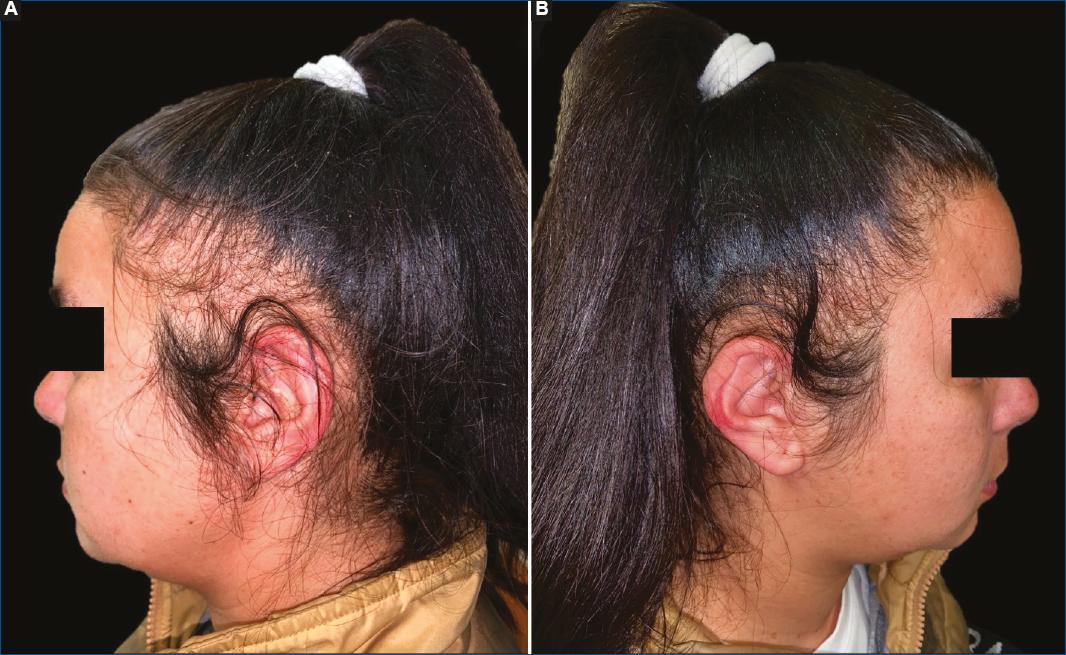A 28-year-old woman, with no history of interest, consulted for hair loss for at least 10 years with no apparent associated trigger. On examination, a bilateral frontotemporal pillar loss was observed (Figs. 1A and 1B), coinciding with the area of tightness of her ponytail hairstyle. She related that ever since she could remember, she always combed her hair taut with a rubber band. On trichoscopy, fine hair was noted with no other trichoscopic findings, except for seborrheic dermatitis of the scalp. With the diagnosis of tractional alopecia, measures emphasizing the change of hairstyle and off-label use oral minoxidil 1mg/day werre initiated, with evident improvement after 3 months of treatment.

Figure 1 A: loss of the right and B: left frontotemporal pillar, in a linear fashion and limited to the region of greatest tension due to the ponytail. Seborrheic dermatitis of the scalp can also be observed.
Tractional alopecia is a type of alopecia caused by continuous exposure to pulling forces on the scalp, typically pigtails, rubber bands or helmets, which initially cause reversible hair loss, but without treatment, lead to scarring alopecia1,2. Its early recognition by every doctor and the recommendation to avoid elements that pull the hair are important.














